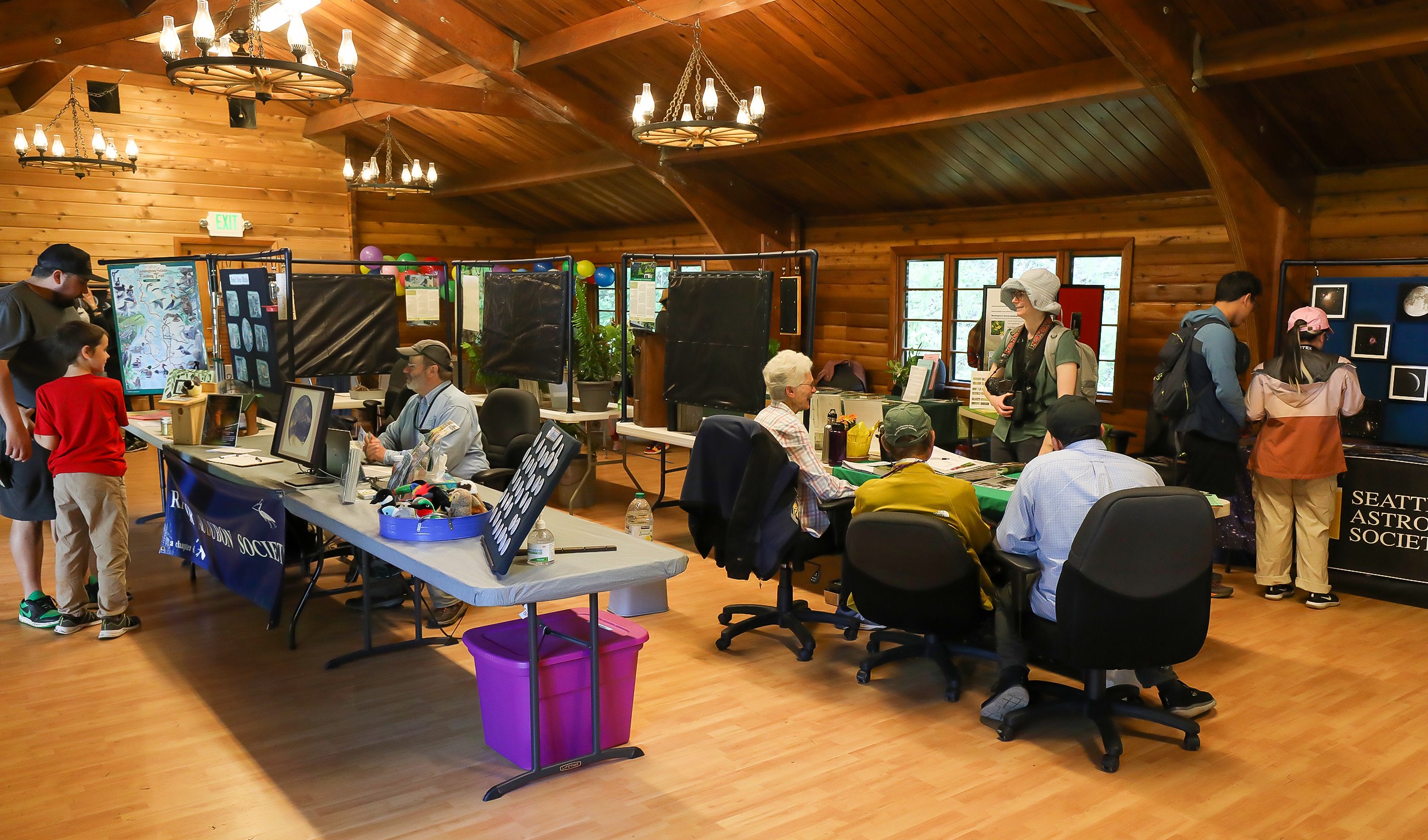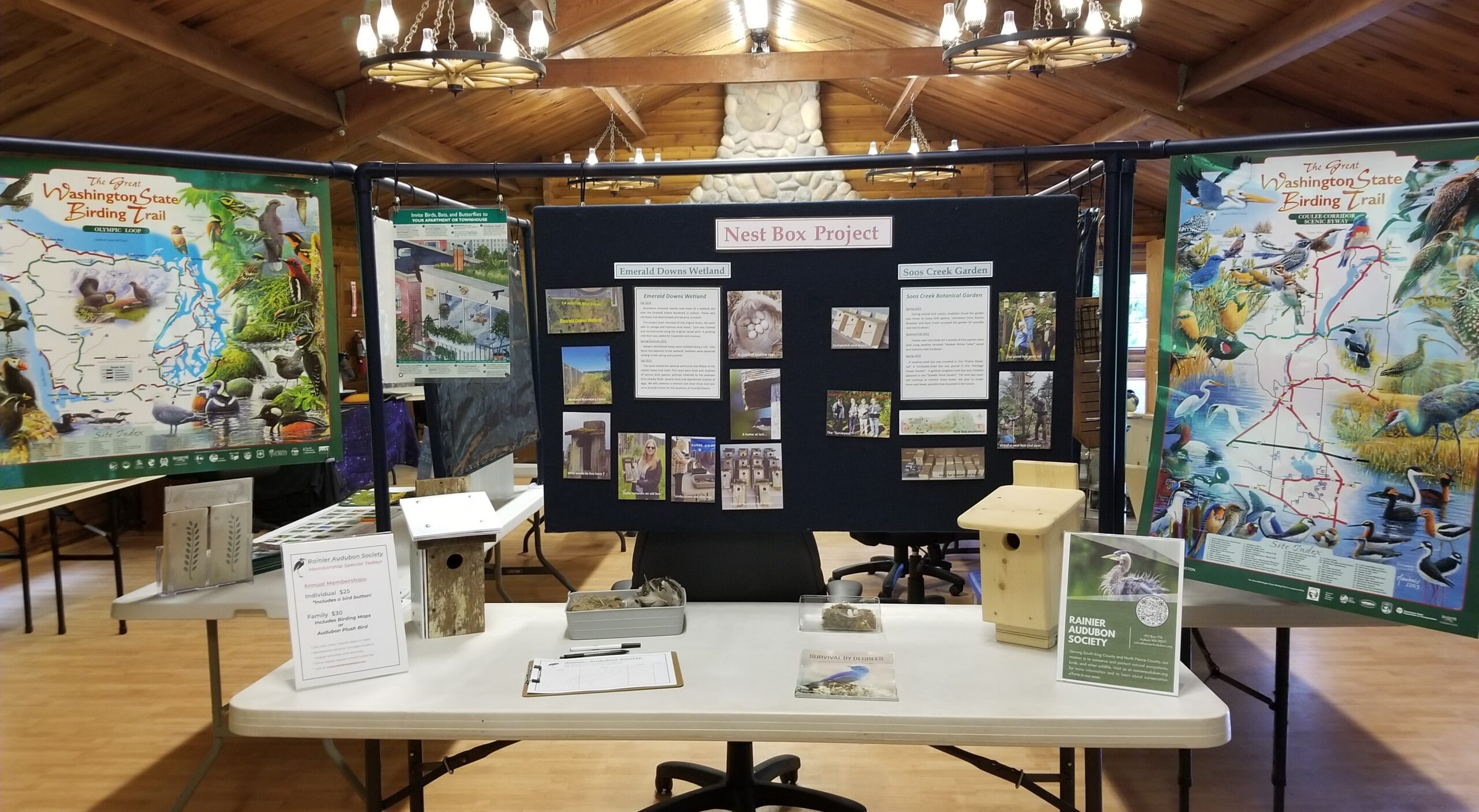

Seen & Heard by Calen Randall

There are many types of birding: walking a forested trail, scoping out across a grassy plain, or rocking back-and forth on a boat while seabirding. Chances are, you’ve looked outside during a rainy day and thought “maybe I’ll just car bird today”. Recently, I’ve been doing a lot of birding by bike, since my new home of Davis, CA is the top city in the US for commuting by bike. I find that birding by bike challenges your hearing the most. Differentiating between the call of American and Lesser Goldfinch is a unique challenge as you zip along the bike path. One night, on a ride through the University of California Davis campus, I stumbled upon the Davis crow rookery. While not as huge as our crow rookery in Auburn, swarms of crows still covered every tree surrounding the campus parking garage. While the Merriam-Webster Dictionary describes a “rookery” as a place where birds spend the night and sleep, this rookery seemed more like a place for “quiet time” rather than sleeping as the crows were still flying back and forth between trees, calling in low grumbly tones, and frequently pooping.
My favorite birding by bike surprise so far came on a Saturday night ride through the Davis downtown. “Screeeeee!” A sharp Hollywood scream pierced the air. There was a flash of white as a heart-faced creature swooped into the tree above. A Barn Owl! I starred up at her and to my surprise, she wasn’t perched on a branch, but in a Barn Owl box! For a minute, the owl peered down, seemingly as curious about my helmeted figure as I was of her heart-shaped face. Suddenly, the owl took to the sky, shrieking her Hollywood scream, but this time another scream joined her. A pair of Barn Owls danced across the street lamp lit sky. As we rode off through the town we could still hear them circling overhead and calling. It’s not every day that you find such an urban Barn Owl pair!
The downtown Davis Barn Owls aren’t nesting there by chance. In 2008 the City of Davis was tasked with controlling a growing rodent problem. According to the UC Davis Raptor Center, a pair of Barn Owls can consume up to 2,000 rodents in one year, so instead of proposing en masse toxic rat trapping, the city decided to attract some new “renters” for help. Barn Owl boxes were installed throughout the town. If you ever visit Davis, stop by any of the numerous community parks and keep your eyes peeled for any Barn Owl boxes nestled high in an oak. Most neighborhood parks have a box, though not all are permanently inhabited.
Davis isn’t the only place where you can find Barn Owls and a variety of other owl species, we have plenty at home in Rainier Audubon’s territory. Here are owls and their hotspots in the south Puget Sound:
Barn Owls—Barn Owls have been trickier to find in the Green River Valley recently. There likely are a few that inhabit barns along West Valley Highway or in the farmland around 204th Street in Kent. In the past two winters Barn Owls have been spotted near the southwest barn at the Green River Natural Area (Kent Ponds) mostly by Raphael Fennimore around dusk. You might think of Barn Owls in farmland or open fields, but in the Rainier Audubon territory you can find them near saltwater. A Barn Owl pair has been sighted year-round at Des Moines Marina and occasionally around the downtown area of Des Moines.
Barred Owls—Barred Owls are common nearly everywhere in south King County outside of the Green River Valley. They’re the most common species found near saltwater (you can find them at Dash Point State Park, Dumas Bay, Saltwater State Park, and Marine View Park). For years Barred Owls were a mainstay at the Lake Fenwick frisbee golf course on the Christmas Bird Count, but the last couple years they’ve been absent. I’ve heard more calling during the summer in the daytime than before. Could it be that the owls have found a different part of the lake to hunt and roost at? Another fun pair of locations to find Barred Owls is near the foothills of the Cascades at Nolte State Park and Kanaskat-Palmer State Park.
Western Screech-Owls—Unlike Barred Owls, Western Screech-Owls are far more localized. The most well-known screech owl location in the area is the Wooton Park woods at Redondo Pier. Some have been seen in parks close to the Puget Sound like Dumas Bay and Saltwater, but most sightings come from east of the Green River Valley. In previous years, Western Screech Owls have inhabited at least one nesting box on the east side of Clark Lake Park with the most recent sighting in October 2021. It would be interesting to know if anyone has seen them at Clark Lake Park recently.
Northern Saw-whet Owls—You can’t talk about owling locations in the Rainier Audubon territory without mentioning Soos Creek Trail which happens to be the best spot in the local area for finding saw-whets, especially in the southern section of the trail between the trailhead near Lake Meridian and 240th Street. Usually saw-whets inhabit more forested regions like the East Hill, Covington, or Maple Valley. However, a fun challenge would be to find one at Point Defiance Park in Tacoma. One can be heard giving its “toot” call near the Rhododendron Garden during winter.
Great Horned Owls—Formerly the most common owl in the region, “Great Horns” are another species that are commonly found at Soos Creek, especially during Spring. Otherwise, they are widespread, but not consistent at many specific locations. You might hear one in the Green River Valley around Metzler Park and Flaming Geyser State Park. Lake Wilderness Park in Maple Valley also has great habitat for Great Horned Owls.
Northern Pygmy-Owl—This diminutive predator prefers to hunt in dense evergreen forest usually at or beyond the perimeter of our suburban region. Spring Lake County Park in Renton is your best bet for finding one, but you’ll need to keep your ears peeled. It is most vocal in February and March. Looking for a challenge? Try finding one at Flaming Geyser State Park. Early this year Barbara Petersen and Ken Schroeder found a pygmy owl near one of the ponds. There is plenty of great habitat for them at the park!
Short-eared Owls—Short-eared Owls are the hardest western Washington resident owls to find in our Rainier Audubon region due to the decrease in farmland. Up until 2018, Short-eared Owls were seen annually at Kent Ponds, but other than a random sighting in 2021 none have been seen in the area since. In the last few years, “shorties” have been found on the Enumclaw Plateau, hunting over the farmland. If you are looking for a big challenge you can look for them around sunset around Veazie Marsh or the farms around Osceola, or save yourself the trouble and visit the Skagit Valley where they are much easier to find!
Have you been owling lately? Have any good birding stories? Send your reports to calenbirds@hotmail.com!
Recent Sightings
The year of the Acorn Woodpecker in Washington continues. In September, one popped up for a day at Magnusson Park. Acorn Woodpecker sightings went quiet through October, but in early November someone found one on Vashon Island pecking at a cell tower and seen later in a small oak grove. The Vashon woodpecker has hung around the neighborhood through December. In a typical Acorn Woodpecker outburst year that would be the extent of Acorn Woodpecker sightings, but that wasn’t all for December as Acorn Woodpeckers were photographed at feeders in Kirkland and Covington! Even Eastern Washington had a rarity Acorn Woodpecker sighting. One was seen caching acorns in a wooden cell tower on Commercial Street in Leavenworth!
Bio: After 23 years of searching in his backyard, Calen has yet to find his quest bird, the Blue-footed Booby. Currently a graduate student in Atmospheric Science at the University of California Davis, Calen has spent the last 12 years turning in overdue Seen and Heard articles. Calen loves exploring new habitats in Yolo County, California, but always looks forward to returning home to familiar hotspots in the South Puget Sound



